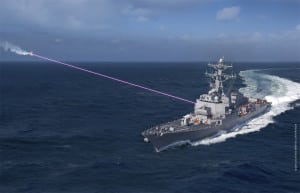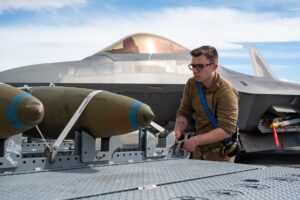F/A-XX fighter (Next Generation Air Dominance)
-
 Navy/USMC
Navy/USMCNavy Air Boss Confirms MQ-25 Will Still Test Fly This Year, Followed By Carrier Integration In ‘26
The Navy Air Boss this week confirmed the new MQ-25 carrier-based unmanned tanker aircraft will test fly this year, followed by aircraft carrier integration in 2026. “The key to that […]
Tagged in: -
 Navy/USMC
Navy/USMCSenate Appropriators Restore $1.4 Billion For Navy’s Sixth-Gen Fighter Program In FY ‘26 Spending Bill
The Senate Appropriations Committee’s draft fiscal year 2026 spending bill plans to fund the Navy’s sixth-generation fighter aircraft to $1.4 billion after the Trump administration and Defense Department slashed it […]
-
 Congress
CongressLawmakers Concerned About Potential Delay To Navy 6th Gen Fighters
Several members of the House Appropriations Committee this week voiced concerns that the Navy’s sixth generation fighter program could be awarded three years later than currently planned. “I will not […]
Tagged in: -
 Air Force
Air ForceCalvert: ‘We Can’t Afford a Repeat of the F-35 Program’
The U.S. Air Force F-47 future manned fighter by Boeing [BA] should take lessons learned from the Air Force/Navy/Marine Corps program for the Lockheed Martin‘s [LMT] F-35, Rep. Ken Calvert […]
-
 Navy/USMC
Navy/USMCActing CNO: Need To Be More Sure Of Laser Output Before Going All-In, F/A-XX At Higher Levels
NATIONAL HARBOR, Md. – The Navy’s top officer said he is not ready “to go all-in yet” on laser weapons without a more sure output while the Navy’s next-generation fighter […]
Tagged in: -
 Air Force
Air ForceGE Pitches XA100 for Wide Application, As Company Announces Completion of Third Phase Testing on Second Engine
General Electric [GE] is pitching its XA100 adaptive cycle engine for wide application across DoD and said on Nov. 14 that it finished third phase testing of the second XA100 […]
-
 Navy/USMC
Navy/USMCNavy’s Secretive NGAD Moves To Design Maturation, Reveals Competitors
The Navy recently revealed that its secretive next-generation fighter program has transitioned to the design maturation phase and disclosed the main competitors hoping to build the aircraft. The Navy’s Next […]
Tagged in: -
 Air Force
Air ForceBoeing and Lockheed Martin Look to $3.4 Billion in Local Financing for NGAD
Boeing [BA] and Lockheed Martin [LMT] are looking to $3.4 billion in local financing to aid company expansions for the development of their Next Generation Air Dominance (NGAD) systems. Boeing […]
Tagged in: -
 Air Force
Air ForceDoD to Have Tighter Control Over NGAD Than Pentagon Has Had with F-35, Kendall Says
The Pentagon will have a higher degree of control over the Next Generation Air Dominance (NGAD) program than DoD has had with the Lockheed Martin [LMT] F-35 fighter, Air Force […]
-
 Air Force
Air ForceNGAD EMD Contract Award Expected Next Year, USAF Says
The U.S. Air Force said on May 18 that it has released a classified solicitation in expectation of an Engineering and Manufacturing Development (EMD) award for the Next Generation Air […]
